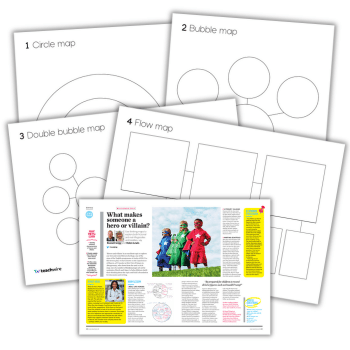Passive learners – 8 ways to engage them

Avoid drama and get every pupil joining in with these simple approaches to classroom questions and answers

Have you spent ages on excellent teaching resources only to be stumped by passive learners? Try these tips to make sure every pupil in your class takes part.
1. Keep it light
Throughout this process, it’s vital not to fall prey to any game-playing or drama-seeking.
Keep it bright and breezy and make it clear that every individual pupil is as valid as any other and has responsibilities to themselves and the class.
You’re just not going to let them opt out; you’re going to support them to participate in the learning process – because that’s the deal.
2. Remove opt-outs
Design routines for tasks, questions and any practice activities so that they explicitly involve everyone.
Avoid question phrases like “Who would like to…”, and “Can anyone…” because this invites a volunteer and – by default – invites opting out.
Make ‘everyone’ the constant target for questions and expectations and reinforce that.
For example, a good show-me board technique communicates the firm expectation: “Everyone show me your board”.
By insisting, pupils have to actively resist not to participate. Most passivity is not active resistance; it’s more often a kind of casual lethargy.
3. Use inclusive questioning
Make cold calling, think pair share, and show-me boards absolutely default, routine, normal, everyday occurrences.
This way, every child knows they are expected to formulate and share answers one way or another.
If cold calling feels hard at first, start with pair-share and show-me boards and then ask pupils to explain their answers.
4. Scaffold choices and responses
Pupils often opt out if they’re unsure how to engage or if they feel overwhelmed by the options.
For example, children sometimes don’t respond well to being asked “What would you like for tea?” They’re paralysed by needing to generate a response.
However, if you ask, “Would you like fish fingers or beans on toast?” they have a simple scaffolded choice to make.
This applies to all kinds of responses. If a child is giving you the ‘I don’t know’ fob-off, give them a simple choice: answer A or B. True or false. Increase or decrease. Then ask them to explain why they made that choice.
5. Provide access to knowledge
Make sure you’re asking questions fully rooted in the work you’ve been doing so pupils have every chance to answer well, building confidence.
Passivity can be a habit borne out of a continual lack of understanding or a feeling that it’s all beyond you; like watching University Challenge, where you don’t really expect to know the answers.
Turn that around. Give seemingly passive students a way back in by making your questions highly consolidatory with a degree of repetitive reinforcement.
6. Mix short and long tasks
Some long tasks can make pupils drift; they perceive that they have ages left so don’t commit to getting started.
Conversely, if tasks are always short, it can feel that, given that the teacher will explain it soon anyway, there’s not much point making the effort.
So, mix this up. Shake people out of habits. Set some punchier short tasks – quick repetitions that require energy.
7. Give value to rehearsal
Often, passive learners simply need ultra scaffolding to engage. A good example might be around using a knowledge organiser.
Before you start quizzing, asking the children for facts, definitions and quotes from memory. Make sure they can simply read where the information sits in the resources.
8. Mix pair and individual work
One more way passive learners avoid taking part is by piggy-backing on the work of others.
To break habits here, make sure you structure tasks so that everyone always has to contribute – especially for anything they do in groups or pairs.
It’s important to make everyone think and be ready to participate.
However, if you only ever do things one-on-one, this can be quite stressful.
It’s helpful to have some time in the safe space of a pair or small group to air thoughts without scrutiny. Blending these approaches is the key.
Tom Sherrington is a headteacher, author, and education consultant. Follow him on Twitter @teacherhead and see more of his work at teacherhead.com








